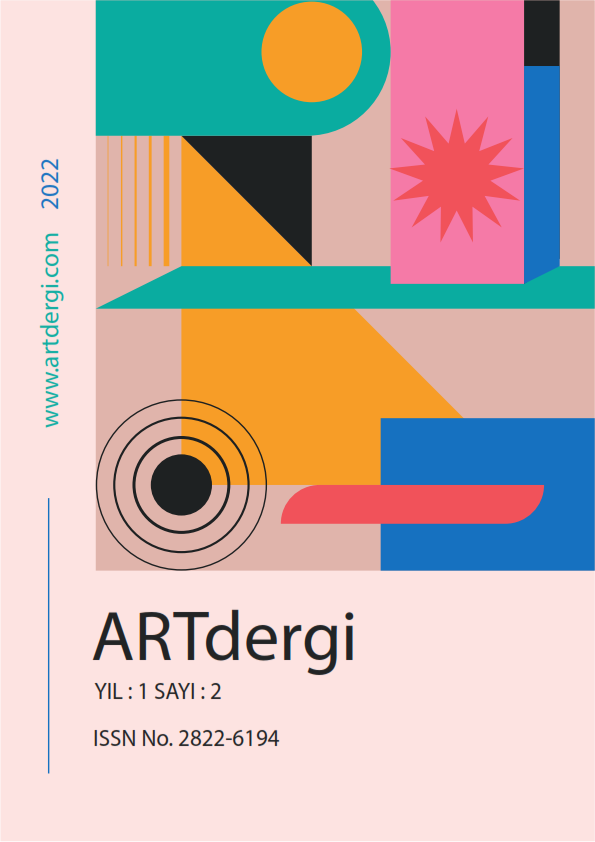THE EVALUATION OF THE MORTARS IN THE HISTORICAL BUILDINGS IN OTTOMAN EMPIRE
DOI:
https://doi.org/10.5281/zenodo.7541980Abstract
Mortars and plasters used in historical buildings provide important helpful information about the building technology of their historical period and they are as important as historical documents. Therefore, the evaluation analysis of the original mortar and plaster during the restoration should be made based on a scientific base. The work may require to include scholars with various professions such as art historians, restorators, physicians, chemists, biologists, engineers, and architects within the same team during the analysis process from time to time. However, method determination practices that shall be used in application on the subject matter have not been standardized. In addition, it is not possible to utilize all the experiments and the standards that check and control the quality of binding products and new materials applied to mortar and plaster analysis of historical buildings. The purpose of mortar and plaster analysis of historical buildings is not to make quality control of the material used, but to determine the physical, chemical, and mechanical properties. Therefore, it is required to provide the information that explains the current conditions of the material as well as the factors that have led to the formation of the current situation of the material used in the buildings. This work evaluates the material properties of some mortars used in historical buildings in the Ottoman Empire and supplies a guide for the determination of the construction techniques in the Ottoman Empire.
References
N. Arıoglu, S. Acun, A research about a
method for restoration of traditional lime
mortars and plasters: A staging system
approach, Building and Environment, 2006,
Volume 41, Issue 9, pp. 1223-1230.
Palomo, A., et al., Historic mortars:
characterization and durability, new
tendencies for research. Advanced Research
Centre for cultural heritage interdisciplinary
projects, Fifth Framework Program
Workshop, 2002, (pp.20). Prague. [3] Acun, S. and N. Arıoglu, N., The Evaluation
of Lime Mortars and Plasters With The
Purpose Of Conservation and Restoration,
XIX CIPA Symposium, 2003, (pp.1-6)
Antalya, Turkey.
Labiadh, M.R., Ouezdou, M. B., Hajjem,
B.T., and Mensi,R. (2009). Characterization
of waterproof-covering mortars on Ottoman
monuments of “Ghar El Melh” (Tunisia),
Construction and Building Materials, 2009,
vol. 23, no. 1, (pp. 423–433).
Corti, C., Rampazzi,L. and Bugini,R., et al.,
Thermal analysis and archaeological
chronology: the ancient mortars of the site of
Baradello (Como, Italy), Thermochimica
Acta, 2013, vol. 572, (pp. 71–84).
Papayianni,I. The longevity of old
mortars,Applied Physics A, 2006, Volume 83,
Issue 4, pp 685- 688).
Pachta,V., Stefanidou,M., Konopisi,S., and
Papayianni,I., Technological Evolution of
Historic Structural Mortars, Journal of Civil
Engineering and Architecture, Volume 8, No.
, 2014, (pp. 846-854) USA.
Degyrse, P., Elsen, J., and Waelkens, M.,
Study of ancient mortars of Sagalassos
(Turkey) in view of their conservation,
Cement and Concrete Research, 32(9), 2002,
(pp.1457-1463).
Altas, G.K., Ozgunler Acun, S. and Gurdal,
E., İstanbul’daki Roma Dönemi Saray
Yapılarındaki Horasan Harçlarının
İncelenmesi, Vakıf Restorasyon Yıllığı, 4
, (pp.41-49).
Gurdal,E., Altas, G.K., and Ozgunler
Acun, S., Erken Bizans Dönemi Dini
Yapılarında Kullanılan Horasan Harçların
Özelliklerinin İncelenmesi. Restorasyon
Yıllığı Dergisi, 2 2011, (pp.63-72).
Altas, G.K., Ozgunler Acun, S. and
Gurdal, E., İstanbul'da Bulunan Erken
Bizans Dönemi Savunma Yapılarında
Kullanılan Horasan Harçların
Özelliklerinin İncelenmesi, Restorasyon
Yıllığı Dergisi, 6, 2013, (pp.81-88).
Binici,H., Arocena,J., Kapur,S., and
Aksogan,O., Kaplan,H., Investigation of
the physico-chemical and microscopic
properties of Ottoman mortars from
Erzurum (Turkey), Construction and
Building Materials 24 (10), 2010,
(pp.1995-2002).
Uğurlu Sağın E, Böke H.
"Characteristics of Bricks Used in the
Domes of Some Ottoman Bath
Buildings", 5th International Congress on
“Science and Technology for the
Safeguard of Cultural Heritage in
Mediterranean Basin", İstanbul-Turkey,
Abstracts, 2011, (pp. 141-151).
Gulec,A. Ersen.A., Characterization of
Ancient Mortars: Evaluation of Simple
and Sophisticated Methods Journal of
Architectural Conservation,Volume 4,
Issue 1, 1998, (pp. 56-67)
Downloads
Published
How to Cite
Issue
Section
License
Copyright (c) 2023 International Journal of Art, Fashion, Music and Design

This work is licensed under a Creative Commons Attribution-NonCommercial 4.0 International License.


